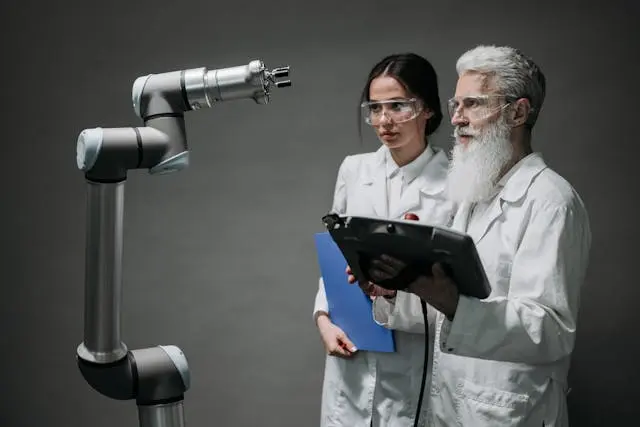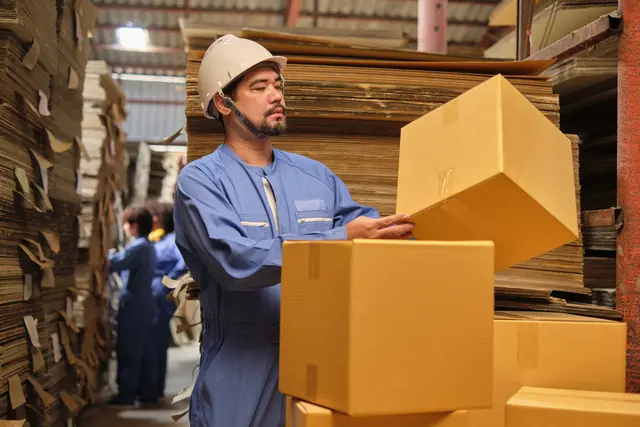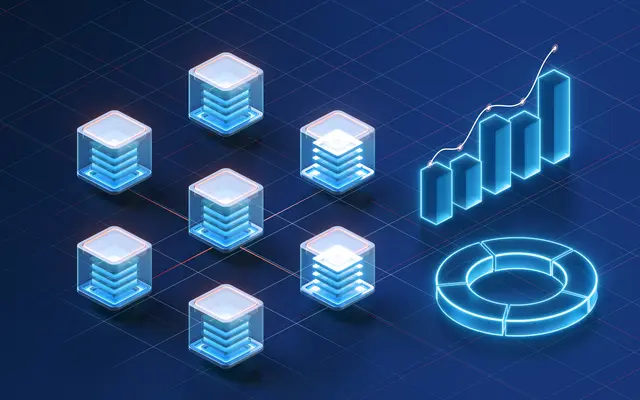Unlocking the Power of Goods Receiving Automation: A Game-Changer for Supply Chain Efficiency
In the fast-paced world of supply chain management, efficient and accurate goods receiving processes are paramount for businesses to thrive. Traditional manual methods of goods receiving are prone to errors, delays, and inconsistencies, leading to reduced productivity and increased costs.
Goods Receiving Automation: A Revolutionary Approach
Enter goods receiving automation, a transformative solution that leverages the power of Python, AI, and cloud-based technologies to streamline and optimize the entire process. By automating key tasks such as receipt notifications, shipment verification, and inventory updates, businesses can significantly enhance their supply chain efficiency and accuracy.
Harnessing the capabilities of Python, AI, and cloud-based solutions, goods receiving automation empowers businesses to:
- Automate Receipt Notifications: Automated notifications ensure that relevant stakeholders are promptly informed upon the arrival of shipments, expediting the receiving process.
- Expedite Shipment Verification: AI-powered image recognition and barcode scanning technologies swiftly verify shipment details against purchase orders and shipping manifests, minimizing errors and delays.
- Seamless Inventory Management: Automated inventory updates in real-time provide accurate stock levels and storage location allocation, optimizing inventory management and order fulfillment.
By embracing goods receiving automation, businesses can unlock a world of benefits, including:
- Reduced manual data entry errors
- Accelerated availability of inventory for order fulfillment
- Enhanced supply chain visibility and control
- Improved customer satisfaction through timely and accurate order delivery
As supply chains become increasingly complex and competitive, goods receiving automation has emerged as an indispensable tool for businesses seeking to gain a competitive edge. By leveraging the power of technology, organizations can transform their goods receiving processes, drive efficiency, and achieve operational excellence.

Python, AI, and the Cloud: A Trinity for Goods Receiving Automation
The advent of Python, AI, and cloud-based technologies has revolutionized the field of goods receiving automation, enabling businesses to achieve unprecedented levels of efficiency and accuracy.
Unleashing the Power of Python
Python’s versatility and ease of use make it an ideal language for developing unattended bots that can automate repetitive and time-consuming tasks in the goods receiving process. These bots can:
- Receive and Process Notifications: Automatically receive and process notifications of incoming shipments, ensuring timely and efficient response.
- Verify Shipment Details: Utilize AI-powered image recognition and barcode scanning to swiftly verify shipment details against purchase orders and shipping manifests, minimizing errors and delays.
- Update Inventory: Seamlessly update inventory levels and allocate storage locations upon receipt of items, providing real-time visibility and control over stock.
The Benefits of Attended Bots
In addition to unattended bots, Python also empowers businesses to develop attended bots that provide real-time assistance to human workers during the goods receiving process. Attended bots can:
- Provide Guidance: Offer step-by-step guidance to workers, ensuring consistent and accurate execution of tasks.
- Handle Exceptions: Identify and handle exceptions that may arise during the receiving process, freeing up workers to focus on more complex tasks.
- Enhance Collaboration: Facilitate collaboration between humans and bots, leveraging the strengths of both to maximize productivity.
The Cloud: A Powerful Orchestrator
Cloud platforms offer a comprehensive suite of features and capabilities that surpass traditional RPA/workflow tools orchestrators. By leveraging the cloud, businesses can:
- Centralize Automation: Consolidate all automation processes within a single, cloud-based platform, providing centralized control and visibility.
- Scale with Demand: Easily scale automation efforts up or down as business needs change, ensuring optimal performance.
- Access Advanced Technologies: Utilize advanced technologies such as AI, machine learning, and data analytics to enhance the accuracy and efficiency of automation.
AI: Enhancing Accuracy and Handling Edge Cases
AI plays a crucial role in goods receiving automation, enabling businesses to:
- Improve Accuracy: Utilize image recognition to verify the condition of goods, reducing the risk of errors and disputes.
- Handle Edge Cases: Employ natural language processing (NLP) to interpret complex or unstructured data, ensuring that automation can handle a wide range of scenarios.
- Leverage Generative AI: Implement generative AI techniques to generate realistic test data, facilitating comprehensive testing and validation of automation processes.
By harnessing the power of Python, AI, and the cloud, businesses can transform their goods receiving processes, drive efficiency, and achieve operational excellence.

Building the Goods Receiving Automation: A Step-by-Step Guide
Developing a comprehensive goods receiving automation solution using Python and cloud-based technologies involves several key steps:
-
Process Analysis: Begin by thoroughly analyzing the existing goods receiving process to identify areas suitable for automation. This includes understanding the flow of goods, documentation, and data involved.
-
Automation Design: Design the automation workflow, outlining the specific tasks to be automated and the technologies to be used. Consider factors such as data integration, error handling, and security requirements.
-
Data Integration: Integrate the automation solution with relevant data sources, such as the inventory management system, purchase order system, and shipping manifest. Ensure that data is securely and reliably exchanged between systems.
-
Bot Development: Develop unattended and/or attended bots using Python to automate specific tasks within the goods receiving process. Utilize AI techniques to enhance accuracy and handle edge cases.
-
Cloud Deployment: Deploy the automation solution on a cloud platform to benefit from scalability, centralized control, and access to advanced technologies.
-
Testing and Validation: Thoroughly test and validate the automation solution to ensure accuracy, reliability, and compliance with industry standards.
Data Security and Compliance
Data security and compliance are of paramount importance in the supply chain industry. When building goods receiving automation solutions, it is crucial to:
- Implement robust encryption mechanisms to protect sensitive data in transit and at rest.
- Comply with relevant industry regulations and standards, such as HIPAA and GDPR.
- Establish clear data governance policies and procedures to ensure data integrity and privacy.
Python vs. No-Code RPA/Workflow Tools
Algorythum takes a Python-based approach to goods receiving automation due to several limitations of no-code RPA/workflow tools:
- Limited Customization: No-code tools often lack the flexibility to handle complex or unique business processes, which may require custom code development.
- Performance Bottlenecks: No-code tools can be less efficient and scalable than custom-built solutions, especially when handling large volumes of data or complex tasks.
- Vendor Lock-in: No-code tools can lock businesses into proprietary platforms, limiting their ability to integrate with other systems or migrate to different solutions in the future.
By leveraging Python and cloud-based technologies, Algorythum empowers businesses to build tailored, high-performance goods receiving automation solutions that meet their specific requirements and ensure data security and compliance.

The Future of Goods Receiving Automation
The future of goods receiving automation holds exciting possibilities for further enhancement and innovation. Emerging technologies such as:
- Blockchain: Can provide immutable and transparent records of goods receiving transactions, enhancing trust and traceability throughout the supply chain.
- Internet of Things (IoT): Can enable real-time tracking of goods and equipment, providing greater visibility and control over the receiving process.
- Artificial Intelligence (AI): Can be used to develop more sophisticated algorithms for image recognition, natural language processing, and predictive analytics, further improving the accuracy and efficiency of automation.
Subscribe to Algorythum
Stay ahead of the curve in goods receiving automation by subscribing to Algorythum’s newsletter. Receive exclusive updates on the latest industry trends, best practices, and innovative solutions.
Contact Us for a Free Feasibility and Cost Estimate
Contact the Algorythum team today to schedule a free feasibility assessment and cost estimate for your custom goods receiving automation requirements. Our experts will work closely with you to understand your unique needs and develop a tailored solution that meets your specific goals and budget.
By embracing the future of goods receiving automation, businesses can unlock even greater efficiency, accuracy, and transparency in their supply chain operations.

Algorythum – Your Partner in Automations and Beyond
At Algorythum, we specialize in crafting custom RPA solutions with Python, specifically tailored to your industry. We break free from the limitations of off-the-shelf tools, offering:
- A team of Automation & DevSecOps Experts: Deeply experienced in building scalable and efficient automation solutions for various businesses in all industries.
- Reduced Automation Maintenance Costs: Our code is clear, maintainable, and minimizes future upkeep expenses (up to 90% reduction compared to platforms).
- Future-Proof Solutions: You own the code, ensuring flexibility and adaptability as your processes and regulations evolve.









